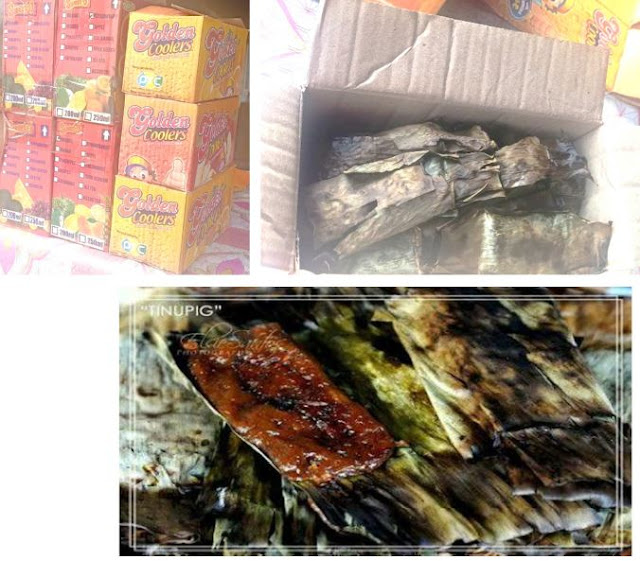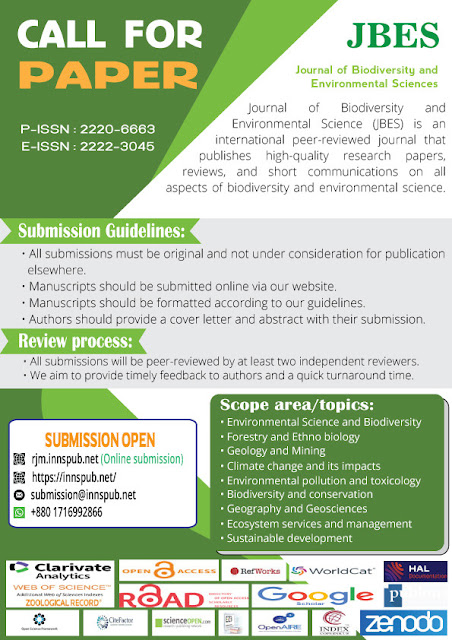CLB. John, GP. Leonida, S. Cherry and M. Manuelito from the different institute Philippines, wrote a research article about Cacao-Infused Tinupig: Crafting & Packaging Innovation, entitled," Development of tinupig enriched with cacao and its packaging".This research paper published by the Journal of Biodiversity and Environmental Sciences | JBES.an open access scholarly research journal on Biodiversity. under the affiliation of the International Network For Natural Sciences | INNSpub.an open access multidisciplinary research journal publisher.
Abstract
The study under the development of the packaging will determine the acceptability of the product to the market as well to the experimentation of adding cacao (Theobroma) tothe Tinupig. Developing the packaging is the first step of the study where the researchers seek the advice of experts on how to make a presentable box that will represent Lasam’s best tinupig. Based on the study conducted by Ahmad & Billoo (2012), it is said that by making good packaging, it has a great influence on the consumer’s buying decision. The appearance of the product will decide whether the product will have more profit or not because it is a tool of self-promotion. The packaging has an important role in marketing. Tinupig plays a significant influence in encouraging or discouraging the purchase of other brands, particularly when the customer selects a similar type of product, because it is produced not only in Lasam but also in Pangasinan, Ilocos, and other regions of Luzon.
Introduction
Food tourism is simple,
and there are no substantial discrepancies between the definitions supplied by
various authors. Food tourism is commonly defined as "a visit to primary
and secondary food producers, food festivals, restaurants and specific locations
for which food tasting and/or experiencing the attributes of specialist food
production regions are the primary motivating factors for travel” (Buhalis
& Costa, (2006). To make it simpler, it can be stated that food tourism is
traveling to other destinations to consume their food. But the researchers
define food tourism as simply a matter of traveling beyond your immediate
neighborhood to find great food. Of course, the further you are willing to
travel, the broader your range of culinary experiences will be.
Lasam is very well
known to tinupig as the traditional delicacies where rice is the major produce
agricultural product. The food known as tinupig, which consists of crushed
glutinous rice and coconut strips wrapped in banana leaves, is cooked on a hot
stone that has been burnt by charcoal. According to the locals, the tinupig has
high demand as pasalubong for OFW’s and to locals residing in Lasam. Tinupig is
very important to Lasamenos (people in Lasam) because it is being celebrated as
Tinupig Festival.
According to Bicarme
(2012), in the year 2005, the Lasamenos set the record for having the longest
run of tinupig for about 2.82km long. Tinupig was then loved and appreciated by
many people and of their family outside Lasam. By then, Lasamenos celebrates
the tinupig festival every year particularly in the month of May and made a
great change to the town because visitors from outside the municipality come by
and buy products of Lasam that greatly effects the economy of the municipality.
According to vendors of tinupig, in typical months, they can make at least 150
boxes with the total of 3,000 pieces of tinupig and during festivals they can
make four times the said quantity. Locals say they buy the iconic product not
only for them but also for their family from abroad. The product is usually
boxed in reused boxes of juice and has never changed since 2005. That's why the
researchers conducted the study on how to improve and promote the iconic
delicacy of the municipality. Food tourism can affect a community through
exporting products from town to town, to cities, and to other countries. And
the result will dramatically change the way of living of the people in that
community because of the products they make. Rice trading in Cagayan is known
throughout the nation. According to Philippine Statistic Authority (2004), With
118.7 thousand farms covering 175.5 thousand hectares, Cagayan came in second.
This means that Cagayan is rich in resources when it comes to rice, therefore,
the more resources a province has, the more profit the locals possess. The same
principle will be applied to tinupig production in Lasam. Thus, researchers are
finding new ways to promote and introduce the tinupig.
By innovating the
packaging of the traditional tinupig, it will increase the demand of the
product and can be sold outside in the town and will also affect the shelf life
of the product, because the researchers will make two ways in making the
packaging, particularly in the boxing and vacuum sealing. By making a
presentable packaging, it will greatly affect the demand of the local product
turning it more profitable than before.
The study under the
development of the packaging will determine the acceptability of the product to
the market as well to the experimentation of adding cacao (Theobroma) to the
Tinupig. Developing the packaging is the first step of the study where the
researchers seek the advice of experts on how to make a presentable box that
will represent Lasam's best tinupig. Based on the study conducted by Ahmad &
Billoo (2012), it is said that by making good packaging, it has a great
influence on the consumer’s buying decision. The appearance of the product will
decide whether the product will have more profit or not because it is a tool of
self-promotion. The packaging has an important role in marketing. Tinupig,
which is produced not just in Lasam but also in Pangasinan, Ilocos, and other
parts of Luzon, has a big impact on whether consumers pick one brand over
another or, on occasion, are discouraged from doing so.
Under the experimentation of adding cacao, which is another product of the town, it will also act as an additional factor to health benefit. According to Marie, J., (2015) cacao beans have a rich natural antioxidant compound, and it contains a natural chemical such as a flavonoid, a type of antioxidant compound that promotes general health specifically it stabilizes and ultimately destroy free radicals in the cells and tissues. Thus, it might lower the risk of several diseases. Compared to the traditional tinupig, the researchers are hoping that the newly innovated tinupig will be the key to changing the way of preparing it.
Reference
Catalina C. Platon,
Rachelle C. Pambid, Evelyn Lumboy, Pangasinan, State University, Philippines 2017.
Food Safety Practices among Native Delicacy Producers and Vendors in the Public
Market of Bayambang in Pangasinan, Philippines. www.apjeans.apjmr.com
Lesley Casas Lubos,
Lice Ode Cagayan University Cagayan De Oro City Philippines. 2014. Food Safety
Knowledge and Handling Practices of Street Vendors. www.researchgate.net Definition of
Food Safety Perez & Manzano 2017. https://prezi.com
/6yjifvalml4z/objectives-of-the-study
Nawaz Ahmad,
MohibBillo, Asad Lakhan, Greenwich University, Karachi. 2012. www.academia.edu/7863976/Effect_of_Product_Packaging_in_Consumer_Buying_Decision
Zekiri J. 2015.www.ecoforumjournal.ro/index.php
/eco/article/viewFile/189/167
Ahmad and Billoo. 2012. https://issuu.com/
calpolytaga/docs /cal_poly_taga_17-18_issuu_5054 70ebbf4809
Bicarme. 2012.
https://www.zamboanga.com /z/index.php?title=Cagayan_News#Lasamall_ set_ for_
2nd_Tinupig_festival
Buhalis and Costa. 2006. https://research-methodology.net/food-tourism
Elda Esguerra, Dormita
Del Carmen, Roxanne Delos Reyes, Ryan Anthony Lualhati. 2016. www.mdpi.com/2311-7524/3/1/14/htm
Marie J. 2015.
http://healthyeating.sfgate.com /antioxidant-benefits-raw-cacao-3990.html
Philippine Statistic
Authority. 2004. https://
psa.gov.ph/content/review-agriculture-sector-cagayan-valley
Rachel F Rocafort. 2017.
https://www.slideshare .net/bardotgov/improving-the-quality-and-shelf-life-of-tupig-and-other-ricebased-products-rachel-f-rocafort
Source: Development of tinupig enriched with cacao and its packaging











%20in%20full.JPG)


0 comments:
Post a Comment